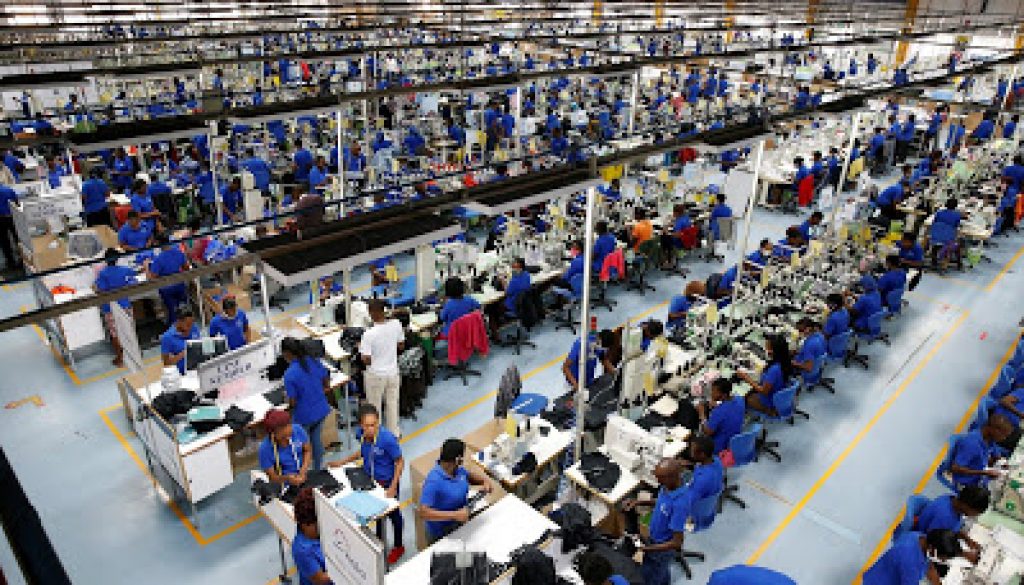China spurs Africa’s industrialisation drive
By Li Zhiwei
The cooperation in industrialisation between China and Africa over the past three years has yielded rich fruits.
Such cooperation is a significant step to propel Africa’s social development, economic transformation, and improvement of people’s livelihood.
The results also constitute an impressive part of the positive progress both sides made from their efforts to implement the ten major China-Africa cooperation plans which were put forward three years ago.
For the period, African countries did not have a fairly integrated industrial system, thus making it hard to start up large-scale infrastructure projects.
Their economic structure usually become more vulnerable when faced with the price fluctuation of international commodities.
African leaders have been aware that they could not truly achieve economic transformation and economic independence without industrialization.
Against the background, they have listed a long-term strategy in the Agenda 2063 of the African Union (AU) to accelerate Africa’s economic transformation.
The continent also aimed to increase value it add to resources and people’s income through industrialization process, especially the growth of manufacturing sector.
The sufficient labour and natural resources have put Africa in front of a broad prospect of win-win cooperation and common development with China, who has technologies, equipment, talents and capital needed for Africa to achieve its aim.
Industrialization is the only path for Africa’s development, said Funeka Yazini April, a research specialist at the Human Sciences Research Council (HSRC) in South Africa, who also that China-Africa cooperation was a key to Africa’s development.
“China built industrial parks in Africa to transfer technology, create jobs for the locals, and increase the added value of local products. There is no reason not to welcome China,” said Namibian President Hage Geingob.
The priority China gives to Africa’s industrialization has propel the latter to take a big stride to tackle its two major development bottlenecks – backward infrastructure and talent shortage.
China’s construction of standard gauge railway connecting landlocked Ethiopia to Djibouti has opened up traffic to freight and passenger, and witnessing a new vista in industrial corridor.
The Addis Ababa-Djibouti rail line, built and operated by China Civil Engineering Construction Corporation (CCECC), a subsidiary of China Railway Construction Corp (CRCC), is also Africa’s first and longest transnational electric railway.
After Djibouti International Free Trade Zone was opened in early July, the China Merchants Group-backed zone has attracted over 20 African and Chinese enterprises to sign the letter of intent to enter the zone.
“The free trade zone would bring welfare to local people,’’ Djibouti President Ismail Omar Guelleh noted.
He said the project would not only increase job opportunities, but also introduce the export processing industry to Djibouti and the impetus for the growth of country’s economy.
In Ethiopia, Chinese have engaged in the construction of the majority of the more than 10 new industrial parks led by local government.
The CCECC-built Hawassa Industrial Park, an emission-free zone with 52 standardized plants, has directly created nearly 20,000 jobs for locals.
The success of the park has not only greatly boosted the confidence of the Ethiopian government in industrialization drive, but also introduced the management experiences of Chinese companies on industrial park to Africa.
China-Africa industrialization cooperation has brought more and more tangible benefits to Africans.
The rural population on the continent is now flowing to manufacturing sector because of the factories and enterprises invested by Chinese companies.
In this March, a foundation-laying ceremony for the China-Africa Textile Company was held in Salima, 100 kilometres from Lilongwe, the capital city of Malawi.
The project makes the dream of changing Malawi economic model from import dependent to export- oriented county a reality.
Malawian President Peter Mutharika, while extending his gratitude to China, noted that the textile mill would have a positive impact on the Malawian economy.
He said that products could be exported to neighbouring countries and international markets, and it would also improve living standards of the rural residents.
Where there are Chinese factories and projects, there are young Africans full of passion and energy. It is a situation commonly seen in more than 20 African countries.
The Huajian Shoe factory in Ethiopia, for instance, employs about 8,000 local workers, making it the country’s largest employer of labour.
The Hebei Iron and Steel Group hires more than 2,400 workers in its steel plant in South Africa, with only eight Chinese employees.
The South Africa plant of Beijing Automotive Industry Corp (BAIC), a joint venture between BAIC and South Africa’s state-owned Industrial Development Corp is another of such Chinese companies in Africa.
The plant, which was initiated in 2015, could produce 50,000 cars each year upon completion of its first-phase.
It would be the largest single investment in the automobile industry of South Africa and even of the whole of Africa after its completion.
At full capacity, its vehicle and complete knock-down parts business will hit 18.6 billion yuan, and contribute 6.2 billion yuan to the exports of South Africa.
Statistics indicate that China has been Africa’s largest trading partner for nine consecutive years, with the investment to Africa totaling over $100 billion.
The achievements of China-Africa industrialization cooperation can be seen everywhere, said China’s Ambassador to South Africa Lin Songtian.
He added that a large number of projects, including railways, ports and industrial parks have been completed, which significantly accelerated Africa’s industrialization drive and showed a strong momentum for rapid development.
Lin believes that China has become and will continue to be the most reliable friend and partner of Africa, helping African countries to achieve sustainable development.




